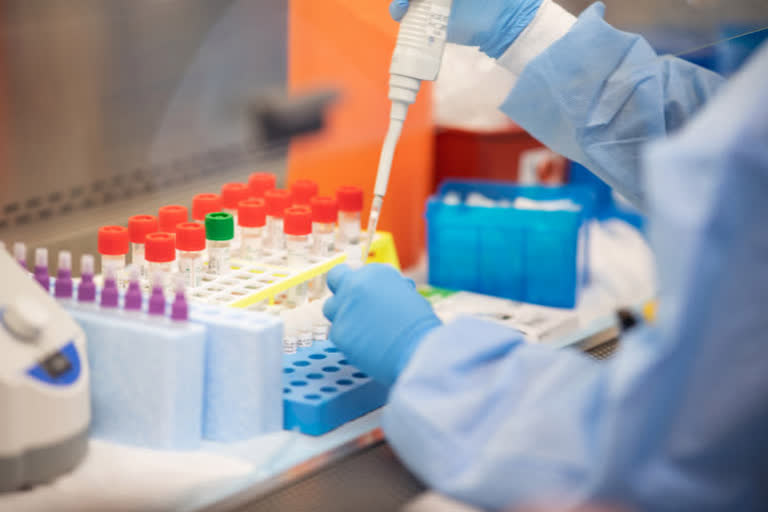Hyderabad: At the time when the World Health Organization was discussing and deliberating whether to declare coronavirus a pandemic, the disease itself was wasting no time, inflicting one country after the other.
COVID-19, which has wreaked havoc world over and crossed 13 lakh cases and 70,000 deaths globally, is also throwing a big challenge to the public health of India. As this is the last week of the 21-day lockdown period, the extent of control over the pandemic will become clear by the 16th of this month.
It took 55 days for India to register its first 500 cases, but the fact that within one day 500 hundred cases were added to the existing 3500 cases, explains that the situation is turning dangerous.
Experts are of the view that only when all the patients with symptoms have been examined, the actual picture of the extent of coronavirus spread will be known. Due to the limited availability of testing kits, the government gave first priority to those who returned from abroad and were presented with positive symptoms. With an understanding that the coronavirus spread will be in four phases, people from abroad and their close friends were quarantined and necessary diagnostic tests were done.
The Centre announced a nationwide lockdown on March 24 with the belief that three weeks would be sufficient to break down the coronavirus chain. In the meantime, necessary arrangements for preparation of the healthcare personnel required to combat the virus along with the required medical infrastructure were ensured.
However, serious doubts are afoot that coronavirus is spreading as an epidemic as 22 cases in Karnataka and 11 per cent cases identified in Maharashtra did not belong to either those returned from abroad or related to them. Hence all the persons with symptoms must be extensively tested and those diagnosed with the disease must be treated immediately.
Read:Rapid diagnostic kit being developed by Pune based startup for COVID 19 screening
Cough, fever, seasonal allergic disorders are common worldwide. Many studies reveal that coronavirus also has the same symptoms initially, but spreads its deadly attack on the malnourished, the aged and those suffering from chronic diseases like diabetes, hypertension, etc.
The WHO warns young people also to be vigilant against coronavirus, which erupted like the Spanish-Flu in 1918s. In March itself, it cautioned: “Our message to all countries is the same. Test all the suspect cases.” By the time the health agency issued its warnings, China, with the lessons learned from the experience of SARS 2003, had tested 3,20,000 people by the end of last month.
With the help of the Hong Kong team that identified SARS, it developed diagnostic test kits and made them available on war-footing. Berlin scientist Albert Lawn had already sensed the devastating power of coronavirus that is similar to SARS. Hence, Germany prudently developed 40 million diagnostic kits by the end of February. With the capacity of preparing 15 lakh kits a week, it is effectively combating COVID-19 by conducting 30,000 tests daily. By identifying the Corona virus in the first phase itself and by providing the required treatment, Germany is going ahead with all the confidence.
In France, where more than 82,000 cases of COVID-19 were reported, deaths exceeded 6.500. Germany's secret of success lies in limiting the death toll to 1,275 with more than 91,000 cases identified! South Korea also followed the same strategy. The two-pronged strategy of saving lives by first examining all the suspects quickly and then saving the lives of the rest affected will be very useful for India.
Read:SCTIMST scientists develop disinfected barrier-examination booth for examining COVID-19 patients
According to the Indian Medical Research Council, a total of 89,534 diagnostic tests were carried out by the time the Prime Minister gave call for nation-wide candle light movement on April 5 to fight the ‘Corona darkness’.
The United States had earlier casually brushed aside the virus outbreak as 'nothing more than the seasonal cold and flu.' Now, it is fighting hard to contain deaths by conducting one lakh tests a day. This should be a forewarning for us not to neglect in forming a strong strategy.
The government, which has already identified the COVID red zones in India, intends to curb the spread of the disease by rigorously locking them and conducting extensive screening tests. The ICMR says that it will double the number of corona tests in every three days, will make use of TB test equipment for the corona suspects, and will undertake extensively the result-oriented antibody tests within fifteen minutes.
The government has fixed Rs 4,500/- fee for COVID-19 test and permitted some private organisations to undertake these tests. These may not be sufficient to sustain the pressure of future requirement. Hence, action must be taken to extend the testing facilities up to taluk level by encouraging reputed private testing labs. It is good to hope that by the ninth day of the next month the COVID-19 will flatten. But in the meantime, it is necessary to prepare the machinery for tests and treatment to meet unforeseen challenge, if any!
Read:Congress welcomes SC order on free COVID-19 testing
